
The motorcycle world was in the midst of an arms race in the early 1970s. Performance was king, and manufacturers were locked in a battle to build the fastest, most exhilarating machines for petrol-crazed riders. Honda had just dropped the CB750, a smooth, sophisticated four-cylinder revolution that brought superbike power to the masses. Yamaha was refining its two-stroke RD series and Suzuki had its triple-cylinder weapon in the form of the GT750—AKA the ‘Water Buffalo.’

Kawasaki wasn’t as interested in refinement. Beat to the punch on the four-cylinder, Kawasaki bet everything on two-stroke performance and set out to build the fastest bike the world had ever seen—something that would leave the competition coughing in a haze of blue smoke. The pinnacle of this effort was the 1972 Kawasaki H2 Mach IV, a 750 cc, three-cylinder two-stroke that redefined what speed meant on two wheels and permanently altered the course of the superbike segment. This was a motorcycle with a single-minded mission: to be the fastest thing on the street. And it was.
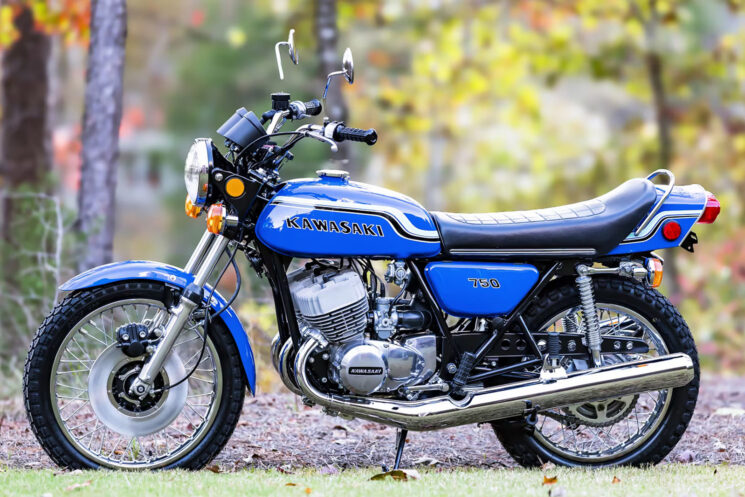
A Bigger, Badder Triple Kawasaki had already made waves with the smaller H1 Mach III, a 500 cc two-stroke triple that produced 60 hp and would click off 13-second quarter-mile times. But by 1972, the top-speed wars were in full swing, and the engineers in Akashi saw an opportunity to up the ante. With lessons learned from the H1, an all-new three-cylinder engine was cast displacing 748 cc. Sheer size boosted the H2’s output and allowed for more conservative port timing, taming the H1’s tendency to lift the front wheel at every opportunity—at least in theory.
The result was a screaming, air-cooled, two-stroke triple that churned out a staggering 74 horsepower at 6,800 rpm. That might not sound like much today, but in 1972, it was enough to humble just about anything on the road. The H2’s top speed was over 120 mph, and its power-to-weight ratio was without equal. In a match of pure acceleration, it outgunned the Honda CB750, Suzuki GT750 and even many contemporary muscle cars.
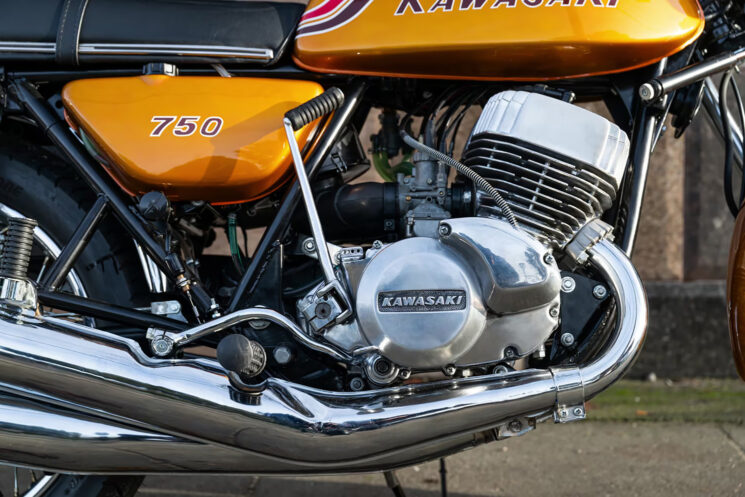
But the H2 wasn’t just fast—it was violent. Despite Kawasaki’s best efforts in the porting department, the Mach IV’s engine was still a light switch in every sense. Below 4,000 rpm, it was relatively tame, but once the tach needle swung past that mark, the bike surged forward like it had been rear-ended by a pickup. The front wheel clawed at the sky and the sound was unmistakable—a shrieking, high-pitched wail that signaled impending trouble for the unprepared.

A Deadly Reputation Any discussion of the H2 Mach IV is libel to discuss the inadequacies of Kawasaki’s chassis, but those critiques come from the privilege of evolving standards. The Mach IV’s handling was considered adequate in its day, and the brakes (rear drum, standard front disc, optional second disc) were said to be a fair match for its power.
While history smacked the H2 with a bad wrap in the handling department, the shortcomings of ’70s motorcycle design were on full display with the H2’s rev-happy triple. The combination of a short wheelbase, flex-prone frame, and sudden power delivery made for hair-raising moments at speed. A poorly timed throttle roll-on mid-corner could send the rear tire spinning, while hard braking would overwhelm the front forks. Many riders—especially those transitioning from more docile four-strokes—found themselves in the weeds before they knew what hit them—cementing the Mach IV’s reputation as ‘The Widowmaker.’
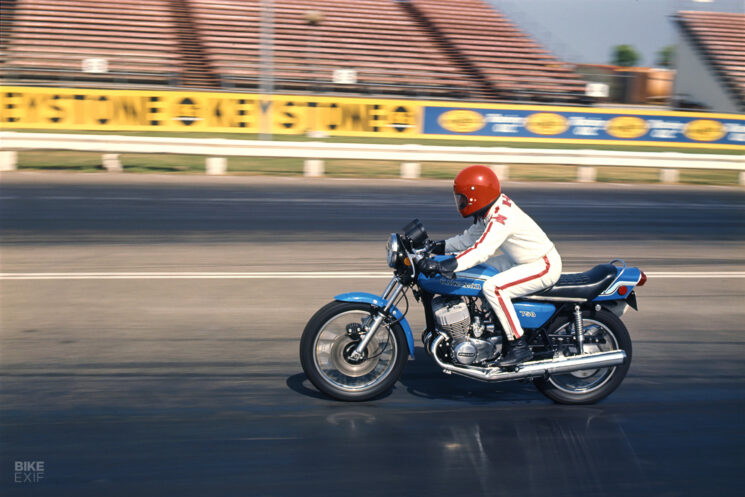
A Superbike to End All Superbikes When the dust settled in 1972, Kawasaki had accomplished their goal. The Mach IV had a fearsome reputation on the street and Tony Nicosia’s 11.95 seconds quarter mile at Fremont Dragstrip established it as the world’s fastest superbike. Kawasaki was king, but the narrow scope of the H2’s mission led to the ultimate case of ‘be careful what you wish for.’
For all its unbridled power, the press lamented the bike’s handling, fuel economy, aggressive porting and rattly nature—in effect, asking the H2 to be something it wasn’t meant to be. Kawasaki refined what they could over the next couple years by lengthening the swingarm, reworking the exhaust and changing the port timing to improve MPGs. Subtle improvements for the price of a few ponies, and even though the ’73 to ’75 models were better bikes, they didn’t have the same luster as in 1972.
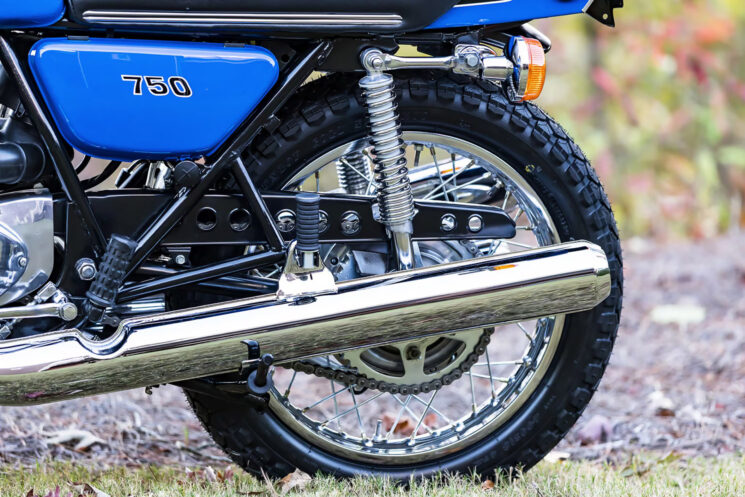
It seemed that the masses had spoken. Emissions regulations were tightening, and the market was shifting toward four-stroke refinement. Kawasaki replaced the H2 with the Z1, a 900 cc four-stroke inline-four that carried on the company’s obsession with speed but with more sophistication.
“The Mach IV made us turn toward a more balanced kind of performance and thus assured the future of machines like the exquisitely contrived Kawasaki Z1. But in doing that we may have moved where the big two-stroke triple cannot follow, the ultimate performer in a world where people no longer worship just performance.” —Cycle Magazine 1974
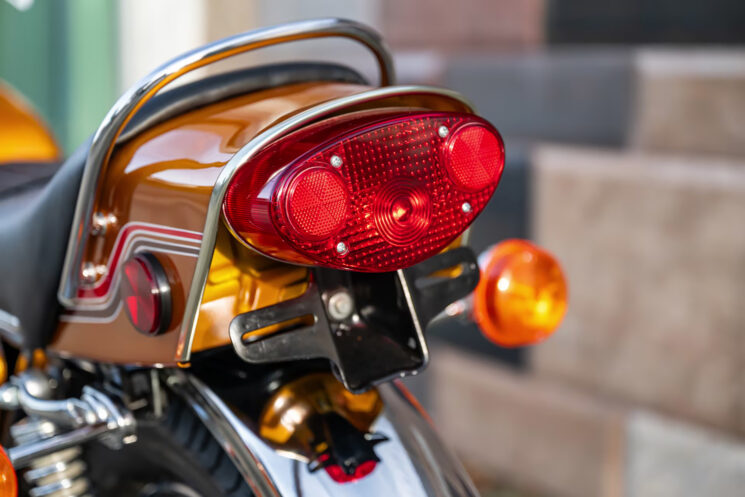
Auction Insanity Despite its short production run, Kawasaki produced a staggering 47,000 H2 Mach IVs, ensuring it will never be a rare bike in the traditional sense. And yet, people pay out the nose for them. Average examples of the Mach IV sell for $20,000 to $25,000 on internet auction platforms, but that’s nothing compared to the big auction houses. There, you’re talking $30,000 and up for the cream of the crop, and the best examples from 1972 can catch north of $50,000. Perhaps the H2’s final laugh at its competitors is when the hammer drops.
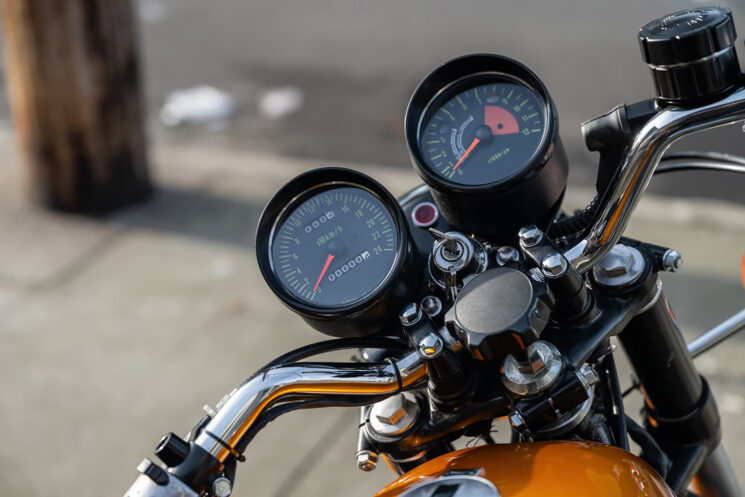
It seems that every ambitious collector needs an example of the coveted Widowmaker in their collection, and they’ll have 16 chances at Mecum’s Las Vegas Motorcycle sale this weekend. Nearly every variant is available, and over half of them are desirable first-year examples.
That’s certainly where the money’s at, but every one of these bikes stands a chance at fetching over $30,000 and picking the best one is futile from behind a computer screen. LOT S221 is pictured through the majority of this article, and it could be the pick of the litter—a desirable first-year model finished in orange with the optional twin front discs. For my money, I’m letting the big bidders battle for the blue ’72s and wheelieing off into the sunset on this Candy Purple ’75—as soon as my lottery winnings deposit.

Source: Mecum

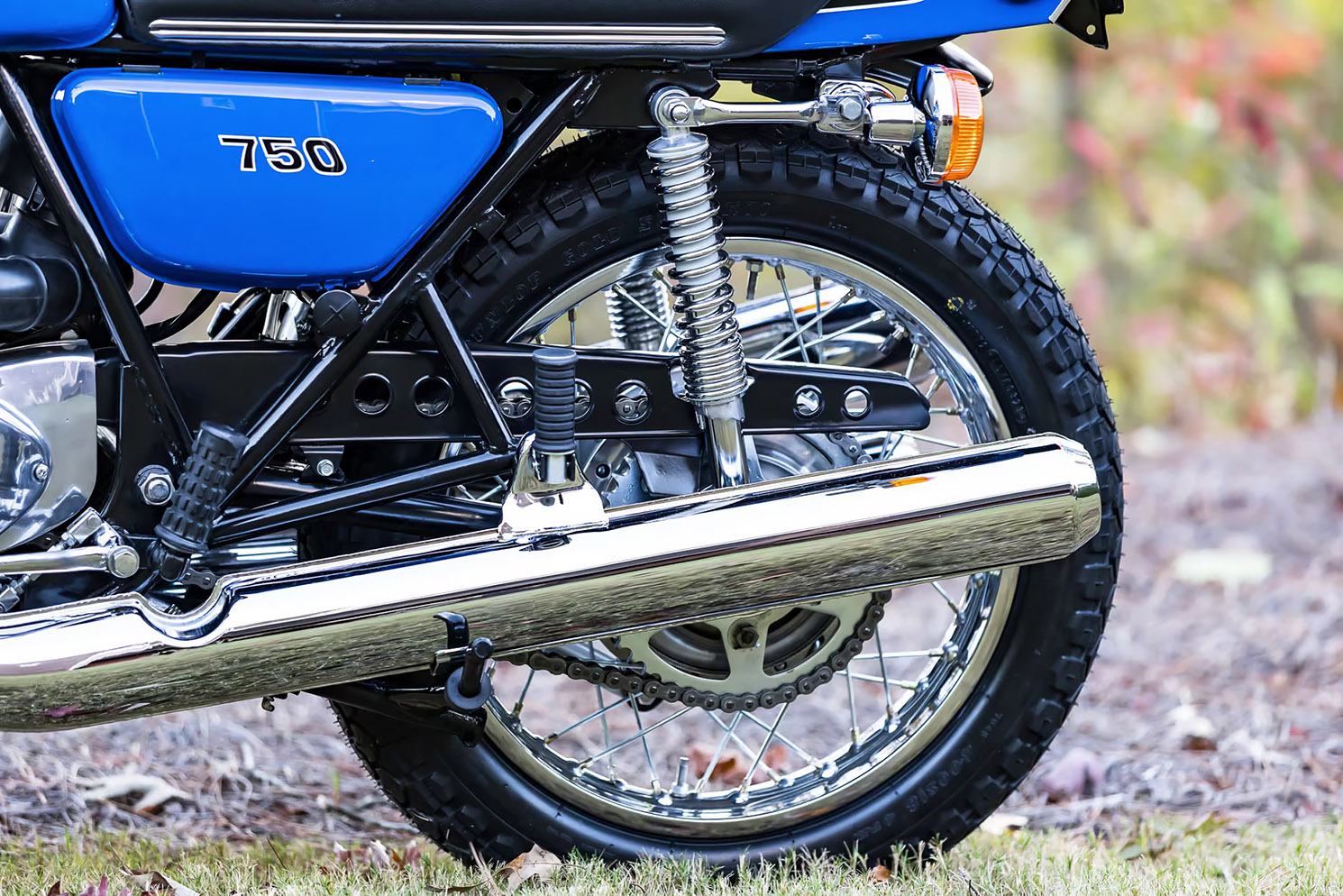

Leave a Reply